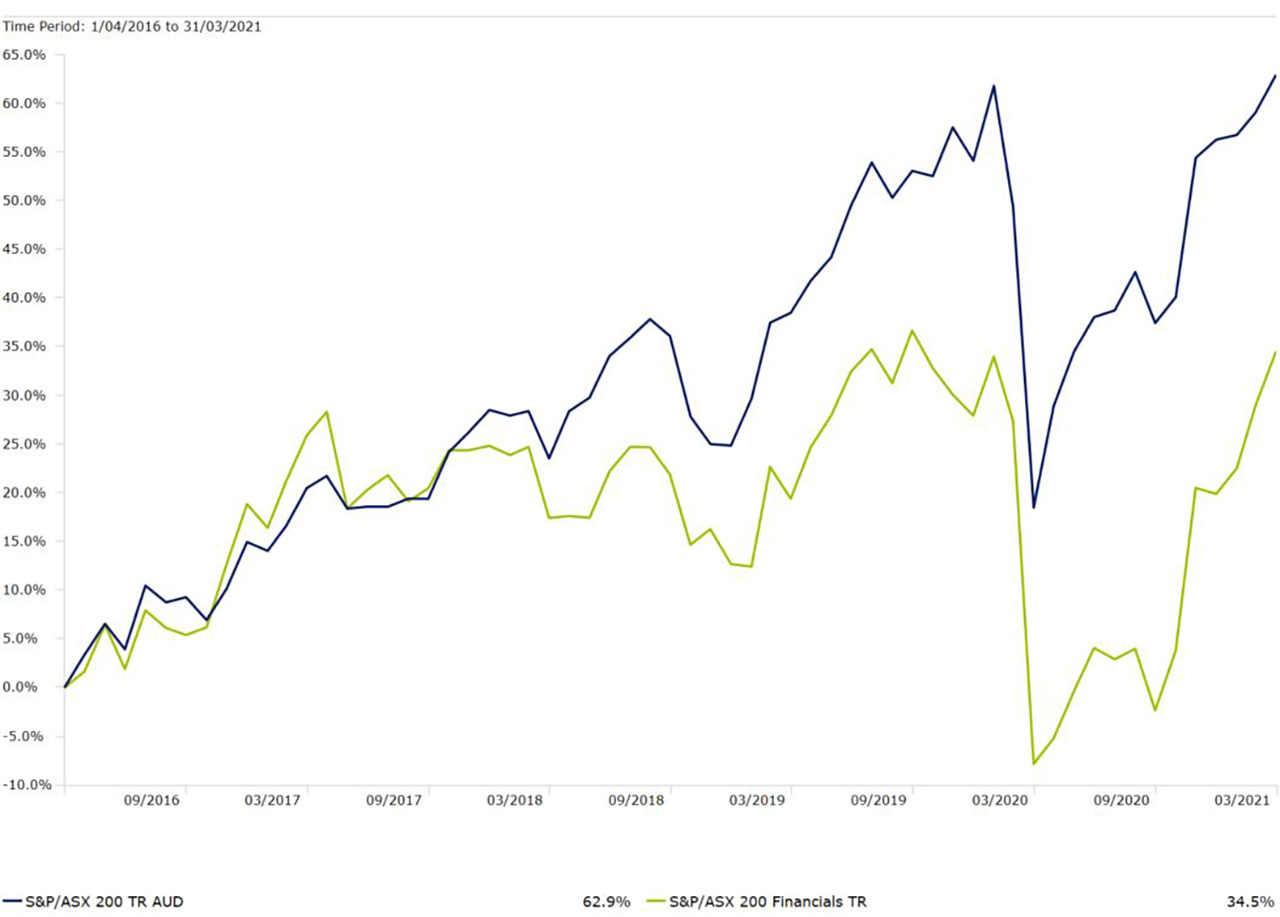Economic recovery extends Aussie banks a helping hand
Special dividends could be on the cards.
Mentioned: ANZ Group Holdings Ltd (ANZ), Commonwealth Bank of Australia (CBA), National Australia Bank Ltd (NAB), Westpac Banking Corp (WBC)
Major Australian bank stocks have stormed back after years of underperformance thanks to a stronger than expected economic recovery, says equity analyst Nathan Zaia.
The rebound has bolstered bank’s loan books, while cheap loans from the RBA and billions stashed in deposit accounts have kept funding costs low and improved margins, Zaia said in an interview with Morningstar on Thursday.
In the short-term, eyes are on how banks release their loss provisions, the money banks set aside during covid to deal with potential losses.
“The market is positive on more of those provisions being released," he says. "It's comfortable the banks have enough capital and now it's how much they can return in a special dividend or buyback.
“Longer term bond yields are starting to rise and there’s confidence and some thinking that the cash rate might go up and banks could generate better margins than they are now.
“At the same time, credit growth is starting to improve, with loan application numbers looking quite strong.”
The banking sector’s fortunes began turning last October, and by Q1, financial stocks were among the strongest performers domestically, with the S&P ASX 200 Financials Index up around 11 per cent. Australian major banks led the charge, up by 17 per cent on average.
The rally follows years of underperformance. The ASX 200 Financials index has trailed the ASX 200 since early 2018. Covid only sharpened the divergence. Globally, banks stocks suffered worse lows in February and March, and had slower recoveries, compared to broader indices.
The ASX 200 Financials has trailed the ASX 200 for years (5 Yr)
Source: Morningstar Direct
Recent performance has been helped by an end to covid-era mortgage deferrals and a booming economy, which have improved the outlook for their loan books, says Zaia.
“Home loan deferral balances have fallen to around 2 per cent of home loans.
“Strong house price growth and lower unemployment should also help reduce the number of forced repossessions in the short term.”
Banks have also benefited from cheap funding. Since March 2020, banks have taken $96.8 billion in cheap loans from the RBA through its covid-relief Term Funding Facility.
More savings in low-interest deposit accounts have been another source of cheap finance, says Zaia. With people stuck at home and the economy shut, the savings rate peaked at 18.7 per cent in Q3 2020.
Zaia expects bank profits to rebound over 50 per cent in 2021. This is good news for dividends.
“Not only is the dividend yield looking reasonable again, but dividend growth should be good for the next five years.”
“A lot of excess capital in the banks could lead to some sort of special dividend.
“CBA is the one most likely to start, I think there was around 10 billion in excess capital above regulatory requirements. I expect them to start handing that back at some point.”
Australian major banks
Source: Morningstar Direct
The major banks, bar Westpac (WBC), are now all trading within fair value range. Westpac closed Monday $25.08, below Morningstar's fair value estimate (FVE) of $27. Commonwealth bank (CBA) closed $89.05, above a FVE of $77; National Australia Bank (NAB) at $26.66, above a FVE of $26, while Australia and New Zealand Banking Group (ANZ) finished at $28.69, above the FVE of $27.
House prices, ESG and Afterpay
The banks have been on the frontline of changes in the housing market, sustainable investment and the buy-now-pay-later (BNPL) sector.
House price growth set a record in March, with a 2.8 per cent increase across capital cities, according to property data firm CoreLogic. Even as the RBA and the banking regulator APRA are fielding concerns about financial stability, Zaia thinks the risk to the major banks is overstated. Tighter lending standards, mortgage insurance and high loan prepayment will help mitigate any potential losses.
Elsewhere, Australian sustainable funds added $4 billion in new investment over 2020, topping $25 billion. A higher profile for sustainability has increased scrutiny over lending to carbon intensive industries. Zaia thinks the relative size of these loans keeps risks low for the big banks.
“Loans to the coal or energy sector are very small percentages of their loan book,” says Zaia.
“If those exposures go to zero over time, we assume the banks will replace them with alternatives. If we have more hydro and wind, they will need investment too.”
Despite the major banks all possessing wide moats, competition is heating up with BNPL giant Afterpay (APT) preparing to launch a banking service in the June quarter. In response, CBA boss Matt Comyn called for more regulation in the sector, while CBA rolls out a competitor BNPL product.
For Zaia, whether the BNPL sector can succeed depends on its ability to snatch the big bank’s crown jewel: customer relationships.
“The ultimate risk is that competitors like Afterpay build on their relationship with the customer, weakening the bank’s relationship, maybe making the customer less sticky," he says.
“But it’s to be seen whether Afterpay can convert its users into banking customers.
“We’ve seen digital banks come and go and it’s hard to do profitably without scale.”



